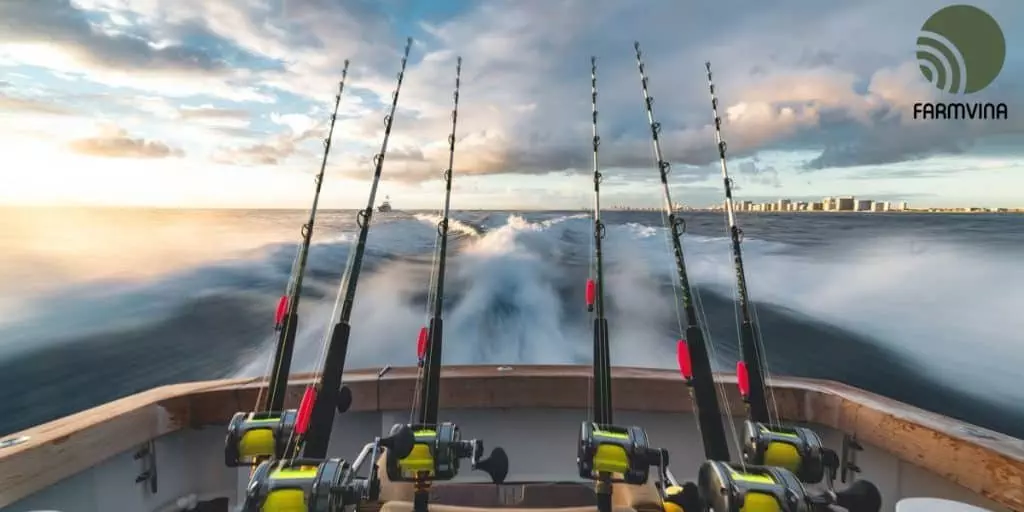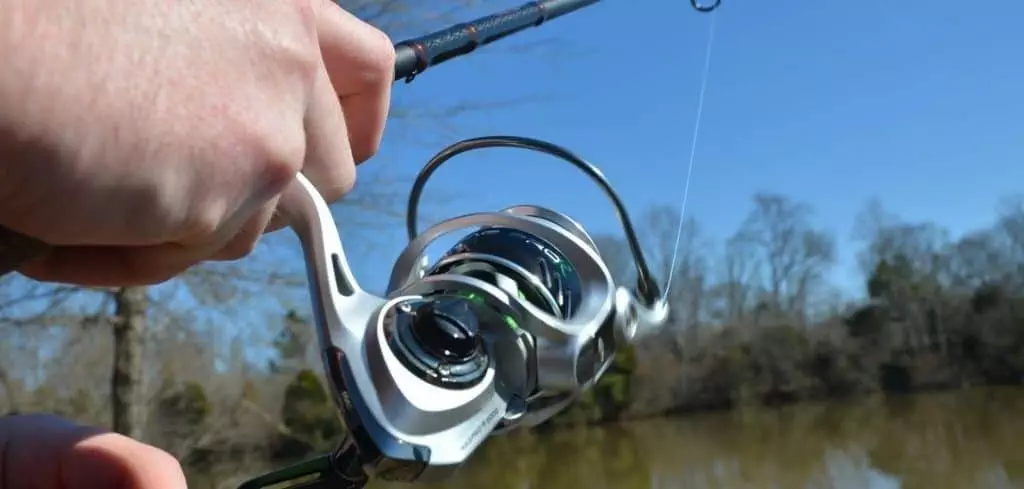Fishing spinning is a widely practiced fishing technique that utilizes a spinning reel and rod. It offers several advantages, making it a popular choice among anglers. In this article, we will explore what fishing spinning is, its advantages, how to choose the right spinning reel and rod, setting up your gear, various techniques for fishing spinning, tips for success, and common mistakes to avoid.
Fishing spinning is a popular fishing technique that uses a spinning reel and rod.
What is fishing spinning?
Fishing spinning, also known as spin fishing, is a fishing technique that involves using a spinning reel and rod. The spinning reel is mounted on the underside of the rod, and the line is released by opening the bail, allowing the angler to cast the lure or bait. This technique is suitable for both freshwater and saltwater fishing and is versatile in various fishing conditions.
Advantages of fishing spinning
Easy to use for beginners
One of the significant advantages of fishing spinning is its ease of use, making it an excellent choice for beginners. The spinning reel’s design allows for straightforward casting and reeling, requiring minimal skill or experience. The simplicity of the technique allows beginners to focus on learning other aspects of fishing, such as lure selection and fish behavior.
Allows for long-distance casting
Fishing spinning enables anglers to cast their lures or baits over long distances. The spinning reel’s design, combined with the flexibility of the rod, allows for efficient and accurate casting. This advantage is particularly beneficial when fishing in larger bodies of water or when targeting fish that are far from the shore.
Can handle a variety of fishing conditions
Another advantage of fishing spinning is its versatility in handling various fishing conditions. Whether you’re fishing in freshwater or saltwater, from a boat or the shore, fishing spinning can adapt to different environments. It allows anglers to target a wide range of fish species, from small panfish to larger game fish.
Choosing the right spinning reel
When selecting a spinning reel for fishing spinning, there are several factors to consider:
Consider the reel size and weight
The reel size and weight should match the fishing line and the targeted fish species. Smaller reels are suitable for lighter lines and smaller fish, while larger reels are better for heavier lines and larger fish. It’s essential to find the right balance to ensure optimal performance and comfort during fishing.
Check the gear ratio
The gear ratio determines how quickly the line is retrieved. A higher gear ratio means faster retrieval, which is beneficial when using lures that require a fast retrieve. However, if you’re fishing with live bait or using techniques that require a slower retrieve, a lower gear ratio may be more suitable.
Look for a smooth drag system
A smooth drag system is crucial for successfully landing fish. It allows you to control the amount of resistance the fish feels when it pulls on the line. Look for a spinning reel with a reliable and adjustable drag system to ensure a smooth and consistent fishing experience.
Choosing the right spinning rod
When choosing a spinning rod for fishing spinning, consider the following factors:
Determine the rod length and power
The rod length and power should be selected based on the fishing conditions and the targeted fish species. Longer rods provide greater casting distance, while shorter rods offer more control and accuracy. The power of the rod refers to its strength and ability to handle different fish sizes. Light power rods are suitable for smaller fish, while heavy power rods are better for larger fish.
Consider the rod material
Spinning rods are commonly made from fiberglass or graphite. Fiberglass rods are more durable and flexible, making them suitable for beginners and fishing in rugged environments. Graphite rods, on the other hand, are lighter and more sensitive, providing better control and feel. Consider your fishing style and preferences when choosing between these materials.
Check the rod action
The rod action refers to how much the rod bends when pressure is applied to the tip. Fast action rods bend mostly at the tip, while slow action rods bend throughout the entire length. Fast action rods provide greater sensitivity and are suitable for techniques that require quick hook sets, while slow action rods offer more forgiveness and are better for fighting larger fish.
Setting up your fishing spinning gear
To set up your fishing spinning gear, follow these steps:
Spooling the reel with fishing line
Choose the appropriate fishing line based on the fishing conditions and the targeted fish species. Attach the line to the reel’s spool and wind it evenly, ensuring proper tension. Avoid overfilling the spool, as it can lead to line tangles and decreased casting distance.
Attaching the reel to the rod
Align the reel’s foot with the reel seat on the rod and secure it in place. Make sure the reel is tightly attached to prevent any wobbling or movement during fishing. Double-check the alignment to ensure smooth line flow from the reel to the rod’s guides.
Adding a leader line and terminal tackle
Attach a leader line to the end of the main fishing line to provide additional strength and abrasion resistance. Tie the leader line using a suitable knot, such as the improved clinch knot or the uni knot. Add the desired terminal tackle, such as hooks, swivels, or lures, based on your fishing technique and target species.
Techniques for fishing spinning
There are various techniques you can use when fishing spinning. Here are a few popular ones:
Casting and retrieving
Casting and retrieving is the most common technique used in fishing spinning. Cast your lure or bait to the desired location, allow it to sink or float, and then retrieve it by reeling in the line. Vary your retrieval speed and use different lure presentations to entice fish to strike.
Jigging
Jigging involves vertically moving the lure or bait up and down in the water column. This technique is effective for attracting fish that are holding near the bottom or suspended in deeper waters. Use short, sharp rod movements to create an enticing jigging action.
Twitching
Twitching is a technique that mimics the movement of injured prey. It involves imparting quick, jerky movements to the lure or bait to attract fish. Twitch your rod tip to create a darting action, and pause intermittently to simulate vulnerability.
Tips for successful fishing spinning
To enhance your success when fishing spinning, consider the following tips:
Choose the right lure or bait
Select lures or baits that are appropriate for the fish species you’re targeting and the fishing conditions. Consider the fish’s feeding habits, water clarity, and the presence of any specific prey items. Experiment with different colors, sizes, and styles to find what works best.
Pay attention to the weather and water conditions
Weather and water conditions can greatly impact fish behavior. Pay attention to factors such as water temperature, wind direction, and cloud cover. Adjust your fishing techniques and lure presentations accordingly to increase your chances of success.
Practice proper casting techniques
Mastering proper casting techniques is essential for accurate and efficient fishing spinning. Practice your casting skills to improve your accuracy and casting distance. Pay attention to your body positioning, rod angle, and timing to achieve optimal results.
Common mistakes to avoid
To ensure a successful fishing spinning experience, avoid these common mistakes:
Using the wrong gear for the fishing conditions
Using gear that is not suitable for the fishing conditions can lead to frustration and decreased effectiveness. Match your gear to the targeted fish species, water conditions, and the size of the lures or baits you plan to use.
Overcasting or undercasting
Casting too far or too short of the desired target area can result in missed opportunities. Practice your casting skills to develop the ability to accurately place your lure or bait where the fish are likely to be.
Not paying attention to line tension
Maintaining proper line tension is crucial for detecting bites and effectively hooking fish. Avoid slack in the line and stay alert for any changes in tension. Be ready to set the hook when you feel a bite or see any indication of fish activity.
Conclusion
Fishing spinning is a popular fishing technique that offers several advantages, making it suitable for both beginners and experienced anglers. By choosing the right spinning reel and rod, setting up your gear correctly, and employing various fishing techniques, you can increase your chances of success. Remember to pay attention to the weather and water conditions, choose the right lure or bait, and avoid common mistakes. With practice and patience, fishing spinning can provide you with enjoyable and rewarding fishing experiences.
Originally posted 2023-07-24 12:38:15.




